|
Readers are reminded that all book reviews are the opinion of our guest reviewers and not necessarily those of Selfishgenie Publishing. 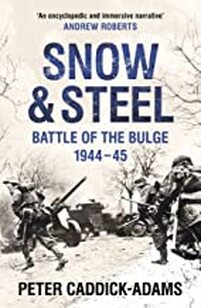 Like many of my generation, I learned a lot of my World War II history not in the classroom or from non-fiction books, but in the cinema. I now realise that was a great mistake, because those films were made for entertainment and are therefore over-simplified. They are also often embellished, which is worse because the true stories are usually dramatic enough not to require embellishment. Take “The Battle Of The Bulge” for example. While the film is based around factual events and does feature some of them in its plot, such as Nazis dressing in US Army uniforms as a deception, it then descends into an over-simplified race to gain access to Allied fuel stocks to keep the German tanks on the road. Even the scenery isn’t authentic as the tank battles are filmed on flat ground in a less than chilly Spain, so the snow that is present in the early part of the film is missing in many later scenes (something I didn’t pick up on in my youth). While that is one feature of the battle – the Germans were very short of fuel – it isn’t the main reason why the battle was lost. And it certainly wasn’t the reason the battle was fought in the first place. 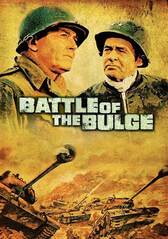 The film's poster, featuring Robert Ryan (right) as Lt Gen Grey and Henry Fonda as Lt Col Dan Kiley. The film's poster, featuring Robert Ryan (right) as Lt Gen Grey and Henry Fonda as Lt Col Dan Kiley. The film also forgets some of the main features of the battle, which were the intense cold, the appalling condition of the roads and the incredibly challenging terrain over which the battle was fought: thick pine forest, steep hills and criss-crossed by rivers with vulnerable bridges. All of that contributed to the loss of the battle. The modern road network disguises the fact that many of the roads in 1944 were little more than muddy tracks, which tank tracks churned into a freezing swamp. But the main reason for the Germans losing the battle, in my humble opinion, was the incredible heroism shown by the American soldiers involved and the flexibility of the Allied commanders in directing forces to the places where they could best fight the enemy. While the film displays this in cameo with the resistance of the 101st Airborne Division at Bastogne, it is only a tiny fraction of the story. 20 men were awarded the Congressional Medal of Honour for the battle, compared to the 16 that were awarded for D-Day. Only 473 were awarded for the entire Second World War. 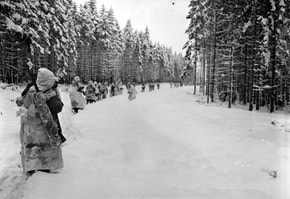 Soldiers of the 82nd Airborne Division outside Bastogne. Soldiers of the 82nd Airborne Division outside Bastogne. One of the things the film doesn’t show, for example, was that the 101st Airborne had to be transported over 100 miles to Bastogne standing up in the back of trucks with no protection from the freezing weather. They then had to start fighting as soon as they arrived. They weren’t the only troops to undergo such an ordeal, I use them only for the purposes of illustration. Many soldiers had been on leave in Luxembourg city or Paris and ended up fighting while still wearing their dress uniforms. Several of the Allied commanders were also on leave or absent from their posts for other reasons. So thin were the Allied defences in places that the cooks, clerks and mechanics found themselves fighting in the front line.  The author, Peter Caddick-Adams Phd The author, Peter Caddick-Adams Phd Which brings me to the book, “Snow And Steel” by Peter Caddick-Adams. My current series of novels is set during World War II and part of one of my plots makes reference to the Battle of the Bulge, which took place from mid-December 1944 to mid-January 1945. The plot doesn’t involve the battle directly, but as it is mentioned I thought I had better make sure I understood the context so that I could better write the plot for my own book. I follow the author, Peter Caddick-Adams, on Twitter because we share a common interest in military history and World War II in particular. I had seen the occasional “plug” for this book, which was his latest work, so I thought “Why not? I need to know more about the battle, he’s written a book about the battle, so let’s give it a go.” Firstly, a little bit about the author. He holds an Honours degree in wars studies, attended the Royal Military Academy, Sandhurst, served as a soldier in the Balkans, Iraq and Afghanistan and now lectures in Military and Security Studies at the British Defence Academy, as well as writing books about Second World War battles. So, we can safely say he knows what he’s talking about, which is a good start. 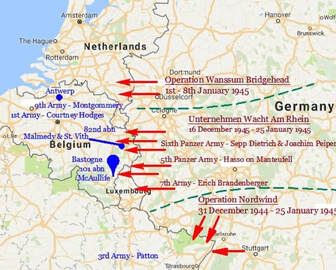 The battleground 1944 The battleground 1944 The most important part of understanding any battle is understanding the reason it is being fought. Why fight there? What did the attackers hope to achieve? Without understanding what the battle was about, you can’t know if it was a success or a failure. Yes, one side won and the other side lost, but did the winners achieve their goals? What were the consequences of losing? Was the sacrifice worth what it achieved? That is why the film of the Battle of the Bulge is so disappointing in historic terms, because it wasn’t about grabbing fuel for tanks, it was about turning the war around and pushing the Allies back to the sea, just as the Germans had in 1940. And that is where this book starts. Why was the battle being fought? 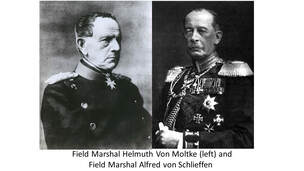 The Germans were using the same basic plan as had been used in 1914, which was the Schlieffen-Moltke plan, named after its Prussian creators when they devised it at the end of the 19th century. The plan involved a major offensive through the Ardennes Forest in Belgium and Luxembourg to strike into France where its defences were weakest. In 1914 it almost worked and in 1940 the same basic plan was used again and this time, using a combination of modern weaponry and speed, it did work. In December 1944 the aim was to strike through Luxembourg and Belgium to Antwerp, re-capture the strategically important port while, at the same time, splitting the British from their American allies so that the two forces could be defeated independently. Had the plan worked it might not have ended the war in Europe, giving the Germans a victory, but it would certainly have delayed the end of the war by many more months, possibly even years. And, of course, with the Allies defeated or delayed in the west it would allow Hitler to concentrate his forces once again to defeat Russia in the east. 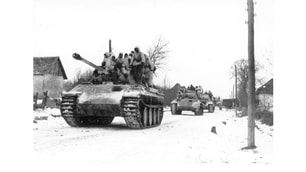 German Panther V tanks advance through a Belgian village. German Panther V tanks advance through a Belgian village. The author then takes us into the minds of the commanders on the two sides. What they thought of the plan, what their mental state was in general after 5 years of war and what the political background was like. That was particularly important on the German side because by that time Hitler was directing the war almost single handed, ignoring or not seeking the advice of his military commanders. It was also important on the Allied side, where the Allied commander, General Eisenhower, was able to operate free of political interference. We then take a look at the military preparedness of both sides in the weeks and days preceding the battle. In order to assemble enough troops for the attack, the Germans had to strip both the Luftwaffe and the Kriegsmarine of men and draft into the army teenage boys, middle-aged men and some former soldiers who had already been discharged because of wounds sustained in earlier battles. It might be thought that these make-shift troops would prove to be a weak link in the plan, but they were surprisingly effective in the early days of the battle. 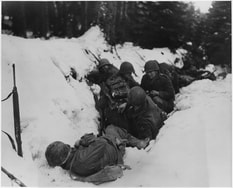 American troops take cover during a German attack American troops take cover during a German attack As well as the Volksgrenadiers (people’s grenadiers, the name given by Heinrich Himmler, who was responsible for their recruitment) there were the more seasoned troops of the German army and the SS and they provided all of the tank units that were used, as well as most of the artillery. The author provides a lot of detail about these men, having interviewed several of them. He provides similar amounts of detail for the Allied troops. On the other side, the Allies weren't prepared for a winter war. After the euphoria of D-Day and the liberation of France, the war was supposed to be over by Christmas. The Allies weren't equipped for one of the worst winters on record. Many of the casualties suffered weren't the result of combat, they were the result of the weather: hypothermia, frost bite and trench foot. Many American soldiers just froze to death. Once the battle starts the author takes us through what happened on the various axes of the German advance, telling us about the men who fought and the terrain over which the battle was conducted. He has visited a lot of it and provides some interesting details of what he has found while walking over the ground. His military eye is able to pick out details that a civilian would probably not notice. Readers who have a mind to do so, could pick up some interesting souvenirs should they ever visit the area. 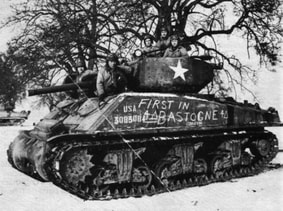 An American Sherman tank at Bastogne. An American Sherman tank at Bastogne. Admittedly this is a bit of a niche subject and won’t be of much interest to some readers. It was also an American battle for the most part, so may not be of much interest to British readers, though there was some British involvement; General Montgomery was given command of the American forces at the northern end of the battlefield, and British troops did fight in some engagements. But the book is aimed at people with an interest in military history and World War II in particular. For those readers I thoroughly recommend “Snow and Steel” by Peter Caddick-Adams. To find out more about the book, click on the cover image at the top of this review. If you have found this blog interesting or informative, why not sign up for our newsletter to get more book recommendations. Just click the button below. Would you like to be a guest reviewer for the Selfishgenie Publishing blog? Contact us with details of the book you'd like to review. Just three rules:
0 Comments
Leave a Reply. |
AuthorThis blog is compiled and curated by the Selfishgenie publishing team. Archives
June 2025
|

 RSS Feed
RSS Feed